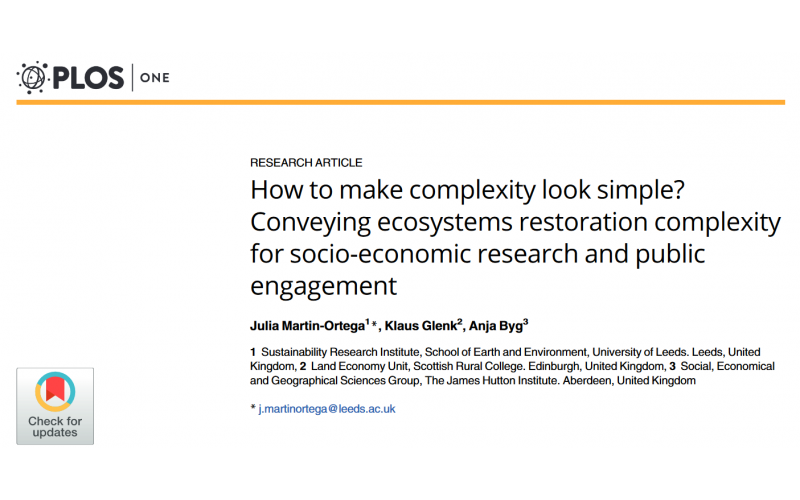Ecosystems degradation represents one of the major global challenges at the present time, threating people’s livelihoods and well-being worldwide. Ecosystem restoration therefore seems no longer an option, but an imperative. Restoration challenges are such that a dialogue has begun on the need to re-shape restoration as a science. A critical aspect of that reshaping process is the acceptance that restoration science and practice needs to be coupled with socio-economic research and public engagement. This inescapably means conveying complex ecosystem’s information in a way that is accessible to the wider public. In this paper they take up this challenge with the ultimate aim of contributing to making a step change in science’s contribution to ecosystems restoration practice. Using peatlands as a paradigmatically complex ecosystem, they put in place a transdisciplinary process to articulate a description of the processes and outcomes of restoration that can be understood widely by the public. They provide evidence of the usefulness of the process and tools in addressing four key challenges relevant to restoration of any complex ecosystem: (1) how to represent restoration outcomes; (2) how to establish a restoration reference; (3) how to cope with varying restoration time-lags and (4) how to define spatial units for restoration. This evidence includes the way the process resulted in the creation of materials that are now being used by restoration practitioners for communication with the public and in other research contexts. Their main contribution is of an epistemological nature: while ecosystem services-based approaches have enhanced the integration of academic disciplines and non-specialist knowledge, this has so far only followed one direction (from the biophysical underpinning to the description of ecosystem services and their appreciation by the public). They propose that it is the mix of approaches and epistemological directions (including from the public to the biophysical parameters) what will make a definitive contribution to restoration practice.

